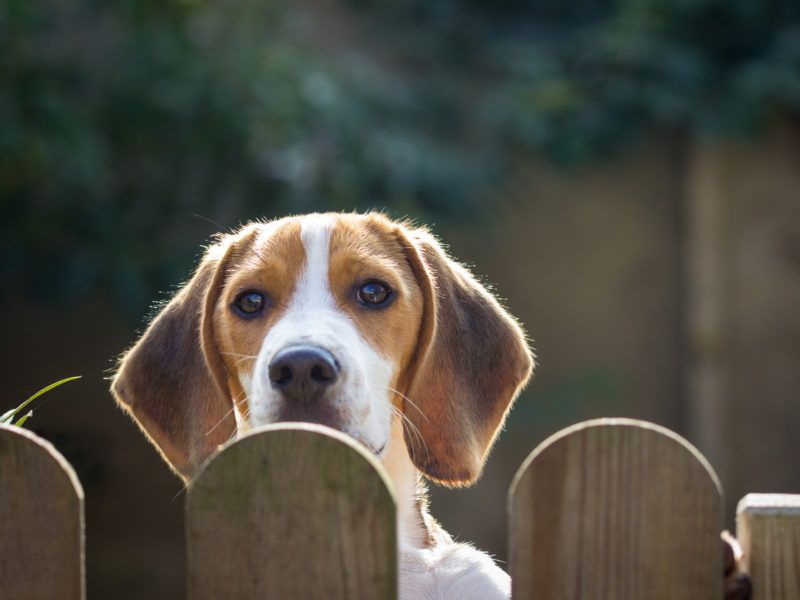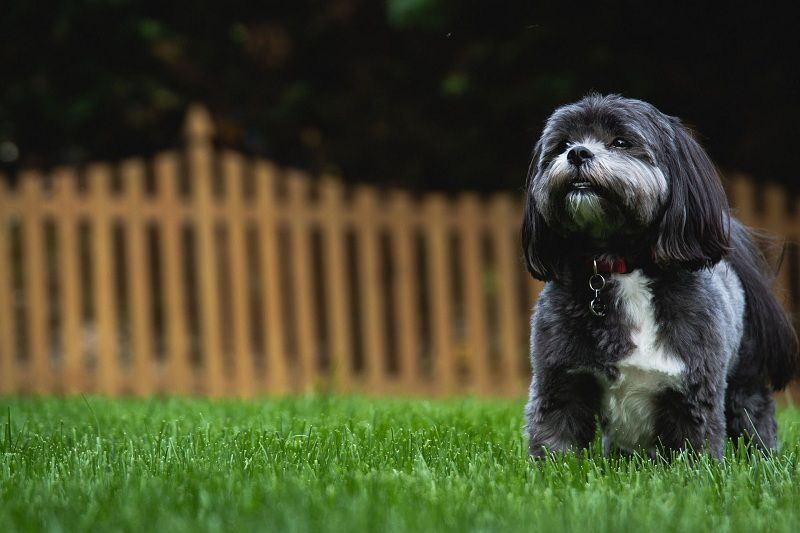Dogs have a seemingly unlimited supply of energy, and letting them exercise and explore in the backyard lets them get rid of some of that energy whilst getting them off your back for a couple of hours. However, you must also be aware of the risks that leaving your dog unaccompanied entails. It can easily be perfectly safe, but there are a few sensible precautions to keep in mind:
Important note: Don’t hesitate to call the vet if your pet needs help.

1. Make sure pests are under control.
If rabies is a problem in your area, be aware of the risks of exposing your dog to potentially infected rats. There are multiple ways to stop rats from being a problem in your garden, but one of the easiest is spraying it with peppermint oil, as for some reason, rats hate the smell!
2. Make sure your backyard isn’t a breeding ground for ticks.
Ticks thrive off of tall grass, so it’s essential you keep your lawn regularly mowed if you wish to let your dog roam free in it. At best, ticks cause irritation, itching, and infection, and at worst transmit diseases such as Lyme disease and Rocky Mountain spotted fever. Make sure to regularly check your dog for ticks and invest in a tick removal set to ensure that your dog does not try and remove it, often creating open wounds that are at risk of infection.
3. Check the weather!
Make sure you are aware of the forecast so that you can take precautions accordingly. If it is going to be a very hot day, ensure that your dog is provided with adequate shade and water, to prevent heatstroke and other conditions. If rain is forecasted, make sure to provide your dog with shelter so it is not exposed to the elements the whole time. If it is going to be particularly cold, consider not letting your dog out at all, as it may struggle to maintain its body temperature.

4. Put tools away!
If you have any tools with sharp edges lying around in the yard, make sure to put them away in an area the dog cannot access. Some dogs are notoriously clumsy and may have an accident whilst inspecting tools that are lying about.
5. If you use fertilizer, make sure it is safe for pets.
If you spray your plants with fertilizer be aware that many are poisonous to dogs. Dogs will eat grass and other plants to aid their digestion, and eating sprayed plants could have catastrophic consequences. Check the packaging of your fertilizer to ensure it is safe for pets, or consider covering sprayed plants with protective netting.
There is nothing to stop your dog enjoying the great outdoors in your backyard, as long as sensible precautions are taken. As long as you ensure your backyard is free from pests, sharp tools, and harmful sprays, your dog can be free to roam the yard, whilst you take a well-earned break in the house.
> You May Also Like:
- 5 Reasons Why Dogs Like to Dig? What to Do About a Digging Dog?
- Best insulated dog house for Winter. Insulated heated dog house
- Best Front Pet Carrier for Small Dogs from 5 to 12 lbs
